Better Care: Patient Communication for Mental Health
A patient sits on the edge of an examination table, their hands twisting a loose thread on their jeans. They’re here for a pre-operative consultation, but their racing heart and shallow breaths have little to do with the upcoming surgery. It’s the clinical environment, the fear of the unknown, and the unspoken anxiety that’s taking over. The nurse, focused on the pre-op checklist, doesn’t notice the subtle signs of distress. This scenario is all too common. According to the National Institute of Mental Health (NIMH), nearly one in five U.S. adults live with a mental illness, and many experience these feelings within the walls of a hospital or clinic.
The good news is that healthcare providers have a vital role in improving patient communication for behavioral health. Through effective communication skills rooted in patient centered care, providers can identify and address mental health conditions such as anxiety and depression before they escalate. It’s not about becoming a psychiatrist overnight; it’s about recognizing that words—and nonverbal communication—are powerful tools for healing.
This post explores the critical link between patient communication for behavioral health and behavioral health outcomes in health care settings. We will cover practical, actionable strategies to overcome communication barriers, enhance active listening, and promote patient satisfaction. By improving our conversations, we can build trust, reduce stress, and ultimately achieve better health outcomes for everyone.
The Power of Words: Connecting Communication to Mental Health and Patient Well-being
In busy, non-psychiatric health care environments like surgical wards or primary care clinics, mental health conditions can be easily overlooked. The focus is often on physical symptoms and treatment plans, while mental illness remains hidden. Yet, mental and physical health are deeply intertwined. Anxiety about a diagnosis or depression linked to chronic illness can directly impact recovery. This is why patient communication for behavioral health is essential.
Healthcare professionals who use effective communication and active listening build a foundation of trust. Patients who feel safe and heard are more likely to disclose their mental health struggles, allowing for earlier intervention and support. Conversely, poor communication or dismissive language can amplify anxiety, create barriers to care, and leave patients feeling isolated.
Improving communication is a shared responsibility with significant benefits. For healthcare staff, it fosters stronger patient relationships and reduces burnout. For patients, feeling understood through both verbal and nonverbal communication enhances satisfaction and engagement in their care. As noted by the Agency for Healthcare Research and Quality (AHRQ), patient-centered communication is a cornerstone of high-quality health care.
Addressing Communication Barriers in Behavioral Health
Effective patient communication for behavioral health requires awareness of common communication barriers that can impede understanding and trust. Patients experiencing mental illness may struggle to express themselves verbally due to stigma, fear, or cognitive challenges. This makes nonverbal communication—such as facial expressions, body language, and tone of voice—an essential tool for healthcare providers to recognize and interpret emotional states.
Healthcare professionals should be trained to observe these nonverbal cues carefully, as they often reveal feelings patients may find difficult to articulate. For example, a patient’s avoidance of eye contact or restless movements can indicate anxiety or discomfort, prompting providers to adjust their communication approach accordingly.
Overcoming communication barriers also involves creating a supportive environment where patients feel safe to share their experiences without judgment. This includes using clear, simple language, checking for understanding, and being patient during conversations. Recognizing and addressing these barriers not only improves patient engagement but also enhances the quality of behavioral health care delivered.
By integrating sensitivity to nonverbal communication and proactively addressing communication barriers, healthcare providers can foster stronger therapeutic relationships. This approach is vital in managing mental illness effectively and ensuring patients receive compassionate, patient-centered care.

Actionable Communication Skills for Healthcare Professionals
Integrating mental health support into every patient interaction starts with small, conscious changes in communication skills.
Active Listening
Active listening means giving patients your full attention, not just hearing them while multitasking. It shows you value their experience.
- Focus fully: Maintain eye contact and minimize distractions.
- Use nonverbal communication: Nod and keep an open posture to demonstrate engagement.
- Summarize and clarify: Rephrase the patient’s words to confirm understanding. For example: “So, you’re feeling overwhelmed managing your new medications—is that right?”
Asking Open-Ended Questions
Open-ended questions encourage patients to share more about their mental health and emotions, helping uncover underlying concerns.
- Instead of: “Are you feeling sad?”
- Try: “How have you been feeling emotionally since your diagnosis?”
- Instead of: “Do you have any questions?”
- Try: “What questions or concerns are on your mind right now?”
Practicing Empathy and Validation
Empathy allows providers to understand and share patients’ feelings, while validation acknowledges those feelings without judgment.
- Use validating statements: “That sounds incredibly difficult,” or “It’s completely understandable to feel anxious before a procedure.”
- Avoid minimizing concerns with phrases like, “Don’t worry.” Instead, acknowledge the challenge.
Creating a Safe Environment
Patients are more willing to open up when their environment feels safe and supportive. Though specialized behavioral health settings use tools to enhance safety, these principles apply everywhere.
- Ensure privacy: Close doors or pull curtains before sensitive conversations.
- Use a calm tone: A reassuring voice helps reduce anxiety.
- Normalize feelings: Let patients know their reactions are common. For example: “Many people in your situation feel this way. It’s a normal response to stress.”
Creating a Supportive Room Environment and Using Patient Safety Boards
The physical environment plays a crucial role in fostering effective nurse patient communication and ensuring patient safety. A well-organized, calm, and welcoming room helps patients feel secure and more willing to engage openly.
- Room setup: Arrange seating to face the patient, avoid barriers like desks, and ensure good lighting to promote comfort and eye contact.
- Minimize distractions: Reduce noise and interruptions to maintain focus during conversations.
Patient safety boards are valuable tools that encourage patient participation and guide effective communication between nurses and patients. These boards display important information such as daily care plans, medication schedules, and contact details for healthcare providers.
- Encourage engagement: Nurses can use safety boards to involve patients in their care decisions, fostering transparency and trust.
- Visual reminders: Boards serve as prompts for both staff and patients to discuss care goals, concerns, and progress regularly.
By combining a supportive room environment with patient safety boards, healthcare providers can enhance therapeutic communication, promote patient adherence, and improve overall patient care outcomes.
Putting Theory into Practice: Examples for Staff and Patients
Scenario 1: The Anxious Pre-Op Patient
- Nurse’s role: Noticing restlessness, the nurse pauses the checklist and says, “It’s common to feel nervous before surgery. What’s on your mind?” The nurse listens attentively, validates fears about post-op pain, and explains the pain management plan clearly. This effective communication reduces the patient’s fear.
- Patient’s role: Feeling empowered, the patient shares: “I’m worried about how much pain I’ll be in after the surgery.”
Scenario 2: The Depressed Chronic Illness Patient
- Provider’s role: During a diabetes check-up, the provider asks, “How has managing your condition affected your mood?” This opens dialogue about emotional struggles linked to chronic illness.
- Patient’s role: The patient connects physical and mental health: “Lately, I’ve felt down and unmotivated to check my blood sugar.”
Scenario 3: A Family Member’s Concern
- Staff’s role: A patient’s daughter expresses concern: “My mom isn’t herself; she’s so quiet.” The nurse practices active listening, gathers details, and promises to discuss with the care team, ensuring a collaborative approach.

Measuring the Impact: Better Patient Outcomes Through Communication
Prioritizing patient communication for behavioral health yields wide-reaching benefits:
- Patients: Improved treatment adherence, reduced isolation, and higher satisfaction. Feeling like partners in care leads to better health outcomes.
- Healthcare Staff: Stronger relationships reduce burnout and increase job fulfillment.
- Health Care System: Enhanced communication leads to fewer readmissions, better quality metrics, and a reputation for true patient-centered care.
Your Next Conversation Matters
Small changes—active listening, empathy, open-ended questions—can transform patient communication for behavioral health. Every interaction is an opportunity to build trust and promote healing.
For Healthcare Providers
Choose one communication skill from this post to practice consciously this week. Notice its impact by reflecting on your interactions: Did the patient feel heard and understood? Were you able to identify any unspoken concerns? Consider asking for feedback from patients or colleagues to evaluate how effectively you applied the communication skill.
To support ongoing improvement, partner with VisiCare, whose value lies in providing innovative communication tools designed to enhance patient engagement and foster stronger healthcare partnerships.
For Patients
Your emotional well-being matters. Don’t hesitate to bring it up at your next appointment. Your voice is important.
Comments (3)
Comments are closed.



Beyond the Checklist: Overcoming Communication Barriers in Behavioral Health | VisiCare
October 16, 2025[…] strategies from being effective in behavioral health. Our previous discussion on “Better Care: Patient Communication for Mental Health” highlighted the power of words. Now, we will dive deeper into the specific communication […]
Designing for Dignity: How Behavioral Health Design Fosters Healing | VisiCare
October 23, 2025[…] health design integrates environmental psychology and design principles to reduce patient anxiety and depression. We will focus on how thoughtful interior design can transform a facility and enhance the overall […]
Beyond Capacity: Managing Rising Behavioral Health Cases in Behavioral Health Hospitals | VisiCare
November 6, 2025[…] behavioral health hospitals where staff-to-patient ratios are stretched thin. (For more insights on enhancing communication). This article outlines an action plan informed by healthcare research, offering practical […]